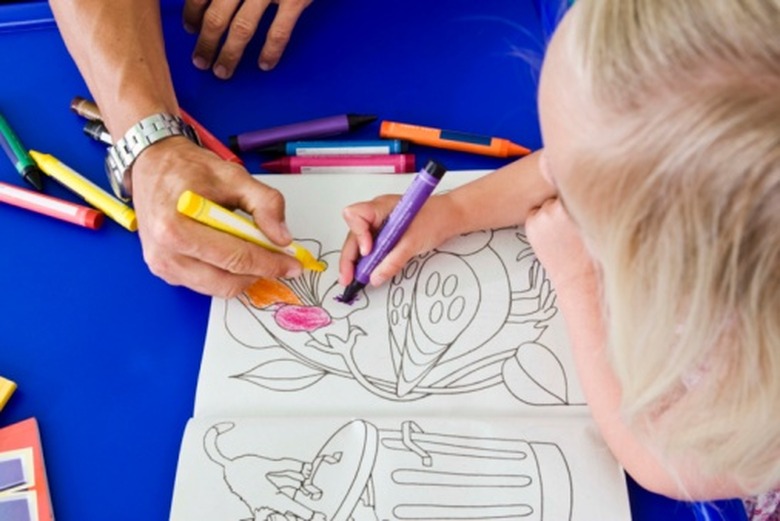Science Projects With Crayons
Though crayons are more commonly associated with craft projects, the kid-friendly art supply is also a suitable subject for a variety of science projects. Crayons are an inexpensive material that can demonstrate a range of science concepts including changing states of matter or surface resistance. Adjust projects to reflect the age or academic level of the students or project participants.
Crayon Recyling
Crayon Recyling
Kindergarten and elementary school students explore the way that heat changes a crayon's physical properties with a crayon recycling project. In the project's most basic form, students peel the paper off crayons or crayon bits too small to use and place the pieces into the tins of a muffin tray. Left in the sun or on a warming tray, the crayons will melt into a single mass than can be cooled and popped out. Encourage students to experiment with mixing different brands of crayons, stirring up the colors or adjusting the heating mechanism to identify how the variables affect the process or final product.
Crayon Melting Points
Crayon Melting Points
Though it's true that all crayons can be melted down, it's not the case that all types or colors of crayons will melt in the same way or at the same temperature. Upper elementary or middle school students explore the variables that affect how a crayon melts with a controlled experiment. One variable that impacts melting points is color, as the pigments and dyes in crayons can impact their melting properties. Students place fragments of same-colored crayons in individual muffin tins and melt the crayons on a hot plate, measuring either the time until full melting or the temperature at the melting point of each color. Another option is to test different brands of crayons to determine which have higher or lower melting points.
Crayons and Paint
Crayons and Paint
Crayons are made largely of paraffin wax, and the wax creates a barrier or coating that leave the pigment on a surface like paper or wood. When you apply a layer of paint to a crayon drawing, different types of paint will react differently depending on the type of paint. A student science project could explore the way different types of paint, such as oil-based, acrylic or water color, react to a crayon drawing. A student might predict which types of paints will cover the wax and which will be repelled. Another variation might be to test different types of crayons or alter the type of surface material to determine how the variables impact the relationship between the paint and the crayon.
Crayon Brand Comparison
Crayon Brand Comparison
A comprehensive and practical science project on crayons is to compare a range of brands of crayons across several different variables. The student must first identify the types of qualities that affect a crayon's performance or value. A student might opt to test strength, color vibrancy, melting point and rate of wear with regular use. A test of the crayons' strength might involve clamping the crayon to a table and then suspending weights from one end until it breaks. A randomized panel of participants might rate the crayons' vibrancy, while a melting test identifies which crayons melt the fastest. To test regular wear, the student might draw or color repeating shapes until the tip of the crayon reaches the base of the paper. After the data are collected, rate the crayons based on their performance across each category.
References
- "Scholastic"; Crayon Creations; Ellen Booth Church;
- Crayola.com: Can We Help
- "Gadgetology: Kitchen Fun with Your Kids, Using 35 Cooking Gadgets for Simple Recipes, Crafts, Games and Experiments"; Pam Abrams; 2007
Cite This Article
MLA
Wahlig, Hannah. "Science Projects With Crayons" sciencing.com, https://www.sciencing.com/science-projects-with-crayons-12748778/. 16 April 2011.
APA
Wahlig, Hannah. (2011, April 16). Science Projects With Crayons. sciencing.com. Retrieved from https://www.sciencing.com/science-projects-with-crayons-12748778/
Chicago
Wahlig, Hannah. Science Projects With Crayons last modified August 30, 2022. https://www.sciencing.com/science-projects-with-crayons-12748778/
